What Are Opioids?
Opioids are a powerful class of naturally occurring and synthetic drugs. These types of drugs are widely used for their pain management capabilities and are commonplace in the management of moderate and severe (and often chronic) pain. However, due to the nature of how opioids affect the body, opioids can cause sedative and euphoria-inducing effects which have made them a target of abuse.
Both the illegal types of opioids (heroin, fentanyl) and legal varieties (codeine, oxycodone, hydrocodone) have become popular recreational drugs.
The number of opioid-related fatalities has skyrocketed in the recent decade, accounting for nearly 70% of drug-related overdoses in 2018 [1].
Unfortunately, the hundreds of thousands of individuals who are already physically dependent on these substances must face the reality of opioid detox, withdrawal, and rehab if they are going to get their recovery on track and build a better life.
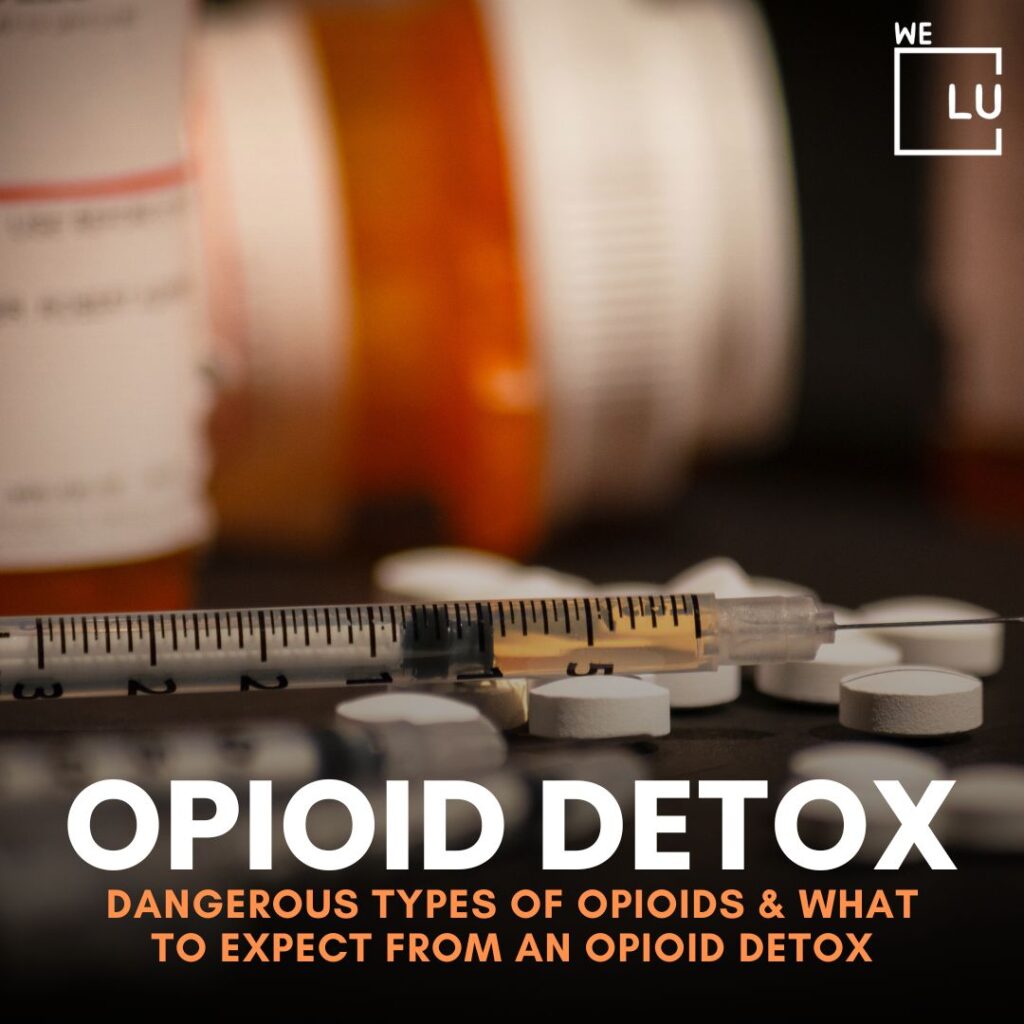
Opioid Addiction Treatment Starts With Detox
When the substance is suddenly absent from the body responds with very unpleasant withdrawal symptoms that range from flu-like to potentially fatal. For this reason, it is recommended to slowly taper off opioid use rather than quitting cold turkey and ideally, with the supervision of a medical professional. Fortunately, there are several opioid antagonists that can be used to help beat opioid addiction at the more difficult stages. These medications can help mitigate opioid withdrawal effects or intervene in the instance of an opium overdose.
Naloxone
Naloxone is the generic name of a drug that can reverse the effects of an opioid overdose. It works by attaching itself to the same receptors occupied by the harmful opioids and taking their place. By disrupting the connection between the harmful opioid and the receptor, the negative effects of an overdose can immediately be reversed. This can be life-saving, namely by restoring the ability to breathe.
Naloxone is available as an injectable liquid and as a nasal spray. with the most common brand names include Narcan and Evizo. This medication is only effective if administered when an overdose is occurring and cannot be used pre-emptively to prevent an opioid overdose.
Buprenorphine
Buprenorphine is able to activate opioid receptors and relieve cravings without eliciting any surge of euphoria. Being an opioid itself, it is able to fulfill the receptors’ physical need to be stimulated but does so without generating feelings of euphoria (the main cause of addiction-forming behavior).
What makes it even more useful is the limits in the effect this partial opioid can exert on these receptors. This ensures that no high can be achieved, effectively eliminating the likelihood of being abused, and also limits the effects of other opioids that are taken.
This medication functions similarly to methadone, another opioid antagonist that is commonly used to treat opioid dependence. However, methadone has recently fallen out of favor as a treatment for opioid addiction due to its potential for being habit-forming. As such, it has largely been replaced in favor of buprenorphine in addiction treatment settings.
Suboxone
Suboxone is a brand-name drug composed of a combination of naloxone and buprenorphine that is used to treat opioid dependence, not just manage the symptoms. The buprenorphine component enables it to lessen any persisting opioid cravings – the primary side effect of opioid detox or withdrawal.
The presence of naloxone allows Suboxone to take treatment a step further. Instead of reversing the symptoms of an overdose, naloxone acts as a deterrent to further opioid abuse. It does so by causing unpleasant withdrawal symptoms should Suboxone be used via injection (a typical administration method for drug abusers) instead of being taken orally as directed. This prevents Suboxone users from trading one addiction for another.
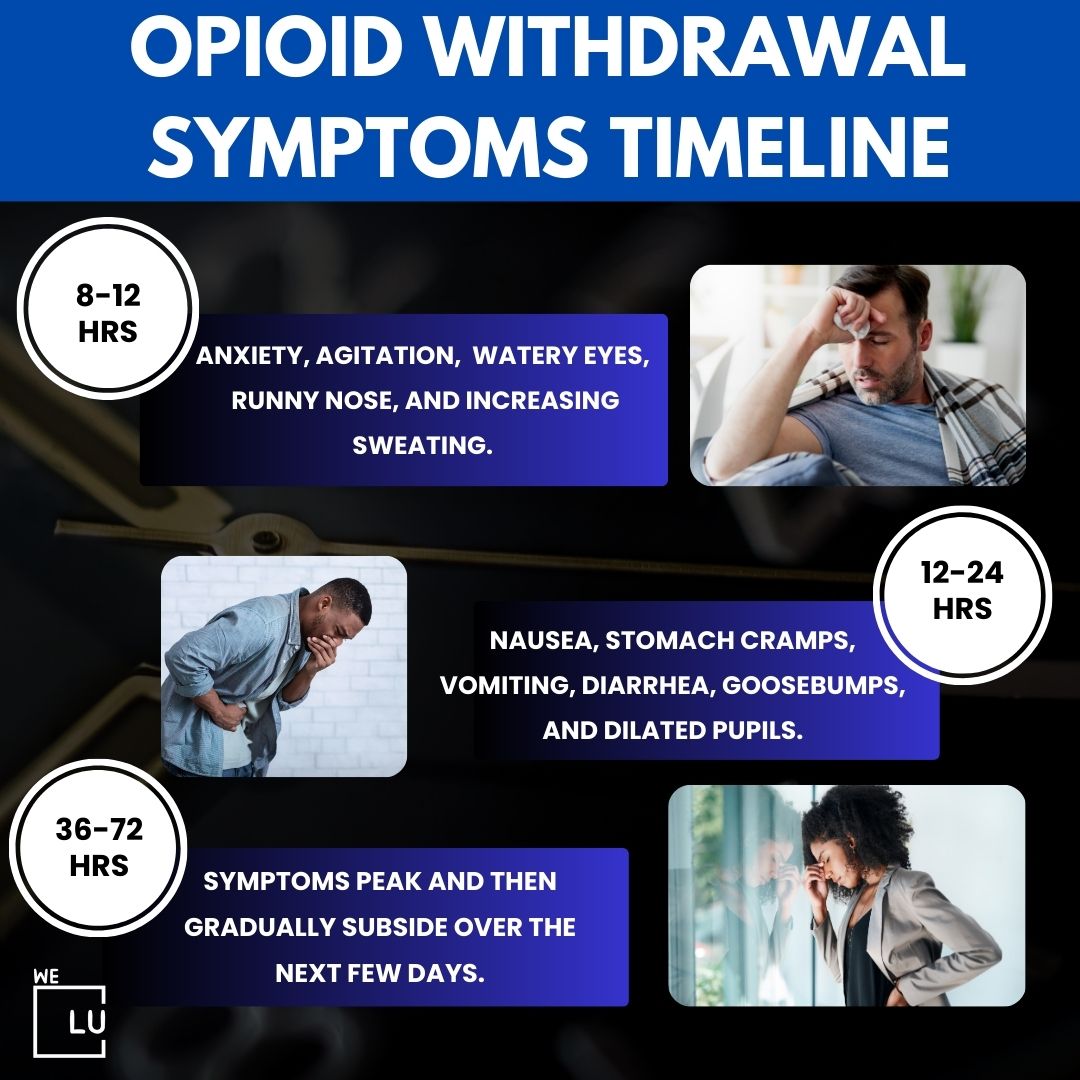
Withdrawal Symptoms
- Nausea
- Sweats and chills
- Soreness and aching in muscles and bones
- Sinus issues
- Fatigue and loss of energy
- Agitation and restlessness
- Vomiting and diarrhea
Symptoms Determinants
As mentioned previously, not every individual will experience the same withdrawal symptoms. In fact, there are various factors that can affect how severe the withdrawal symptoms may be and how long the opioid detox process will take. Depending on the answers to the following items, withdrawal may be longer and more severe, or shorter and less severe. Factors to consider include:
- How long a person has been dependent on opiates
- The type of opiate the person is dependent on
- The frequency and severity of opiate abuse
- Underlying medical conditions
- The co-occurring existence of a psychological health issue
- Highly stressful and unsupportive surroundings
Opioid drug withdrawal mostly adheres to a specific timeline, although the factors listed above may cause some variation. In general, the withdrawal symptoms typically peak within 48-72 hours and subside within a period of 5 to 10 days. The onset, duration, and intensity of withdrawal symptoms will be different for each person, but the general opiate withdrawal timeline includes the following:
- 8-12 hours – Anxiety, agitation, watery eyes, runny nose, and increased sweating.
- 12-24 hours – Nausea, stomach cramps, vomiting, diarrhea, goosebumps, and dilated pupils.
- 36-72 hours – Symptoms peak and then gradually subside over the next few days.
The period and extent of withdrawal symptoms also depend on whether the opioid is long-acting or short-acting. Heroin is relatively short-acting compared to other opiates, therefore, heroin withdrawal symptoms appear just hours after the last dose and may last for a shorter time period. Longer-acting opioid painkillers may not provoke withdrawal symptoms till some days after the final dose, and some symptoms may last for weeks.
Opioid Detox Facility
Treatment programs for opioid addiction usually start with detoxification from the drug followed by inpatient treatment.
Only a finely managed treatment facility provides a steady and comfortable setting in which opioid detox of the drug can take place while providing opiate withdrawal support and medications to help decrease the possibility of complications and difficulties associated with opiate withdrawal.
Opioid detox at a medically supervised facility can minimize the severity of the symptoms and make the withdrawal process significantly easier and more comfortable to endure. Our facilities also offer multiple levels of treatment for an easy transition following the completion of an opioid detox program.
Amenities at We Level Up TX include semi-private rooms, luxurious bathrooms, spacious common areas for socializing, a communal dining area that is always stocked with nutritious snacks, and much more!
Opioid Detox from Home
Opioids detox at home can be difficult and sometimes unproductive. Unaided withdrawal may not be life-threatening, but there is a major possibility that it will lead to relapse. When opioid substances such as oxycodone and heroin begin to leave the human blood system, they begin to develop severe cravings for the substance.
Strong cravings mixed with unpleasant flu-like symptoms can make it easy for someone going through withdrawal at home to give up and relapse before their recovery really gets in its way. Without the medical and social support that a detox center offers, it is tempting to abandon withdrawal and start using again. Medications and therapy are accessible at a medical detox center to help reduce the discomfort and simultaneously reduce the risk of relapse compared to detoxing at home.
Dangerous Types of Opioids
There is a wide array of opioids present in America. Some are prescription drugs used in a medical setting to manage severe pain, whereas others are illicitly-made and abused. Learn more about some of the most common and dangerous opioid addictions:
Danger of Fentanyl
A great controversy surrounding fentanyl is its associated high risk of overdose. Even prescription fentanyl comes with warnings because of how powerful the substance is. However, illicit fentanyl is particularly dangerous due to the unknowns about how the substance was made. A single dose of fentanyl can have devastating effects, but it is the continued, uncontrolled use that carries the most risk. Additionally, the possibility of an overdose increases significantly when heroin is used along with other substances, such as heroin and alcohol.
Effects of Fentanyl
The euphoric and pain-relieving effects of heroin are one of the main reasons why people use the substance. In addition to these effects, using fentanyl can lead to a number of unpleasant changes in the mind and body. Depending on the individual and the dosage, the effects felt may be slightly different. The effects that one could anticipate are similar to heroin or other opioids and include:
- Confusion
- Constipation
- Drowsiness and sedation
- Euphoria
- Nausea
- Dependence and addiction
- Respiratory distress
- Loss of consciousness or coma
- Overdose
- Death
Heroin
Heroin is a highly addictive opiate-based schedule II substance. The possession and use of heroin are illegal in all 50 states. Heroin addiction is extremely dangerous due to its highly addictive nature as well as the fact that it carries a high risk of overdosing or contracting a communicable disease. Although many will never escape the grips of heroin, it is possible and there is hope. The best chance at recovery is through an opioid detox and treatment program.
Detoxification Process
The opiate detoxification process is not exactly the same as detoxing from other addictive substances, such as alcohol or cocaine. The withdrawal symptoms are different and often, there are medications used to help minimize the physical withdrawal symptoms and to prevent the intense cravings that accompany opioid detox. Detox from heroin, fentanyl, and prescription opioids is a closely managed process and often the same or similar medications are continued to be used following detox.
The opioid detox process will be different for individuals who are detoxing via medically assisted treatment versus abstinence.
Medications such as Subutex and Suboxone have been officially approved by the Food and Drug Administration (FDA) exclusively to treat opioid dependence. [2] These new medications have opened up various opioid detox treatment methods.
- Buprenorphine – Prescribed to reduce the span of time it takes for opioid detox and assists an individual in upholding prolonged abstinence from opioids. The commonly used brand name of this substance is Subutex. Following detox, Suboxone may be used for long-term medically assisted treatment. Suboxone is a drug that includes both buprenorphine & naloxone.
- Methadone – Relieves and reduces the unpleasant impact of withdrawal symptoms. It is also used as long-term maintenance therapy for those addicted to opioids.
- Naltrexone – It blocks the effects of opioids and may be used to induce withdrawal. It does not let the opioid intake affect the individual, therefore, it may also be used to avert future dependence and misuse.
- Clonidine – Can help diminish the flu-like symptoms that come with opioid withdrawal, along with other withdrawal symptoms such as the anxiety and agitation most people experience.
Other medications may be used for symptoms such as stomach cramps, diarrhea, insomnia, anxiety, and depression.
Medical opioid detox helps smooth the withdrawal process, reduce side effects, prevent serious complications, and lessens opioid cravings. Overall, these medications offer a decent start towards recovery and help to maintain sobriety long-term. Opioid detox has to be followed with counseling, education and awareness, family and individual therapy, and support groups that can aid an individual in their attempt to stop using drugs and continue sobriety.
Opioid Detox Infographic
The infographic below highlights opioids, a potent class of naturally occurring and synthetic drugs commonly used for managing moderate to severe, often chronic pain. Despite their effectiveness in pain management, opioids can cause sedation and euphoria, making them susceptible to abuse.
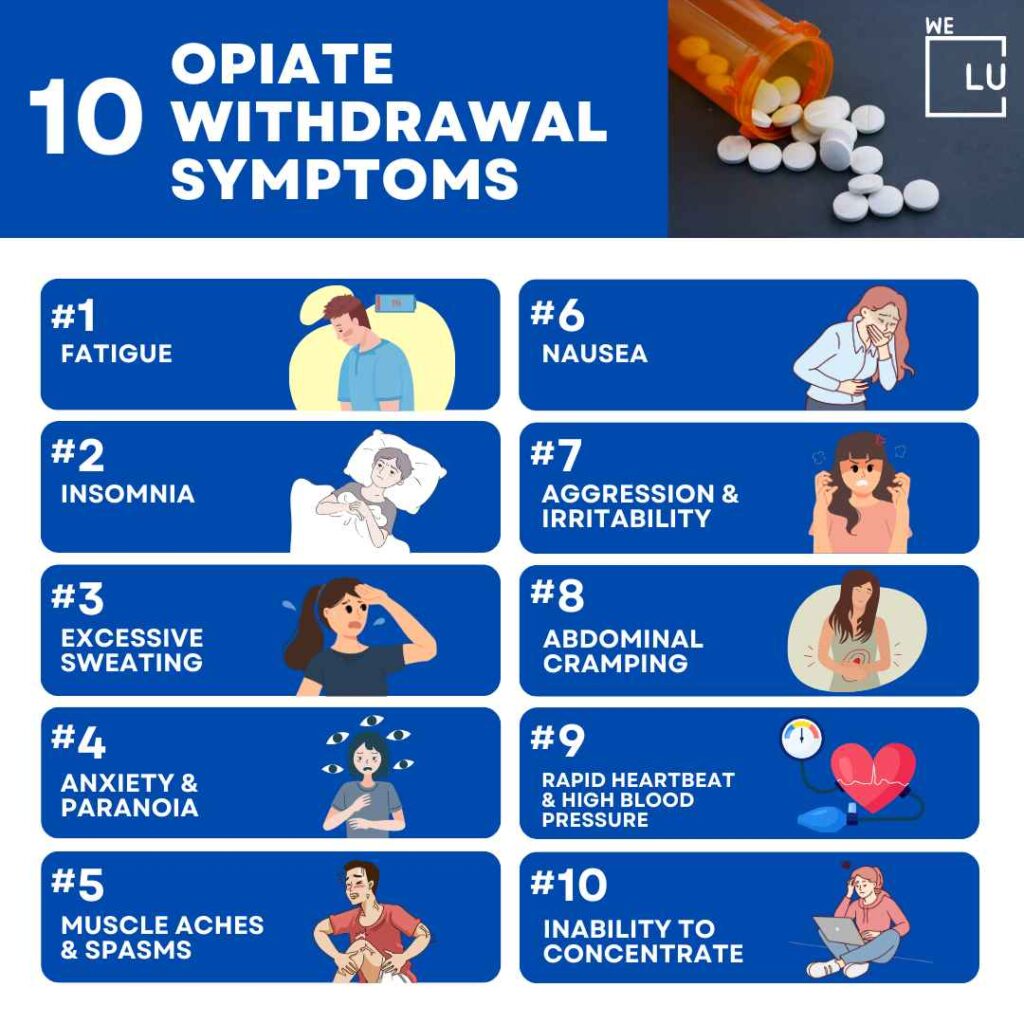
Embed the below “10 Opiate Withdrawal Symptoms” Infographic to your Website. This infographic is provided by the We Level Up addiction treatment center team. To use the below infographics, you agree to link back and attribute its source and owner at https://weleveluptx.com/opioid-detox/
10 Opiate Withdrawal Symptoms Infographic image link: https://weleveluptx.com/wp-content/uploads/2024/03/Opiate-Withdrawal-Symptoms-Opioid-Detox-What-Are-Opioids-Opioid-Detox-Facility-1024×1024.jpg
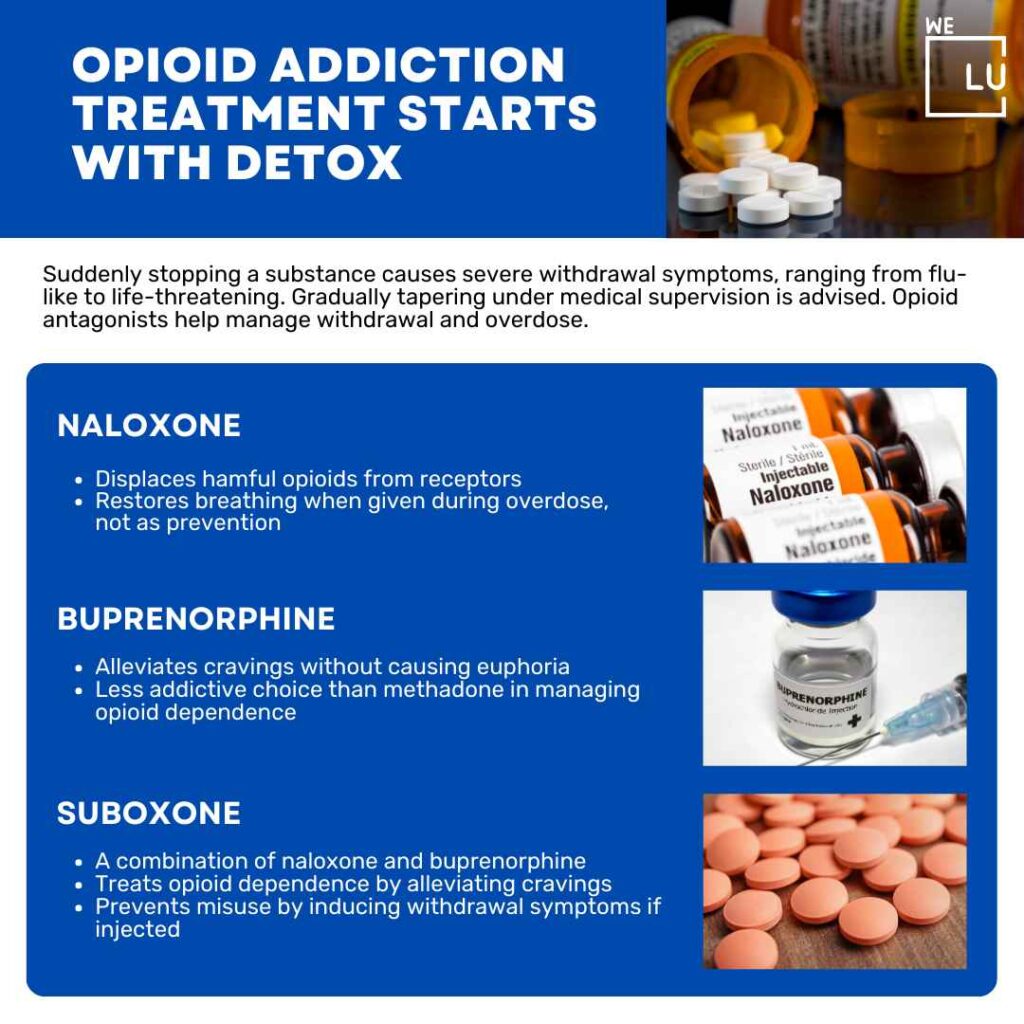
Embed the below “Opioid Addiction Treatment Starts With Detox” Infographic to your Website. This infographic is provided by the We Level Up addiction treatment center team. To use the below infographics, you agree to link back and attribute its source and owner at https://weleveluptx.com/opioid-detox/
Opioid Addiction Treatment Starts With Detox Infographic image link: https://weleveluptx.com/wp-content/uploads/2024/03/Opioid-Addiction-Treatment-Starts-With-Detox-Opioid-Detox-What-Are-Opioids-Opioid-Detox-Facility-1024×1024.jpg
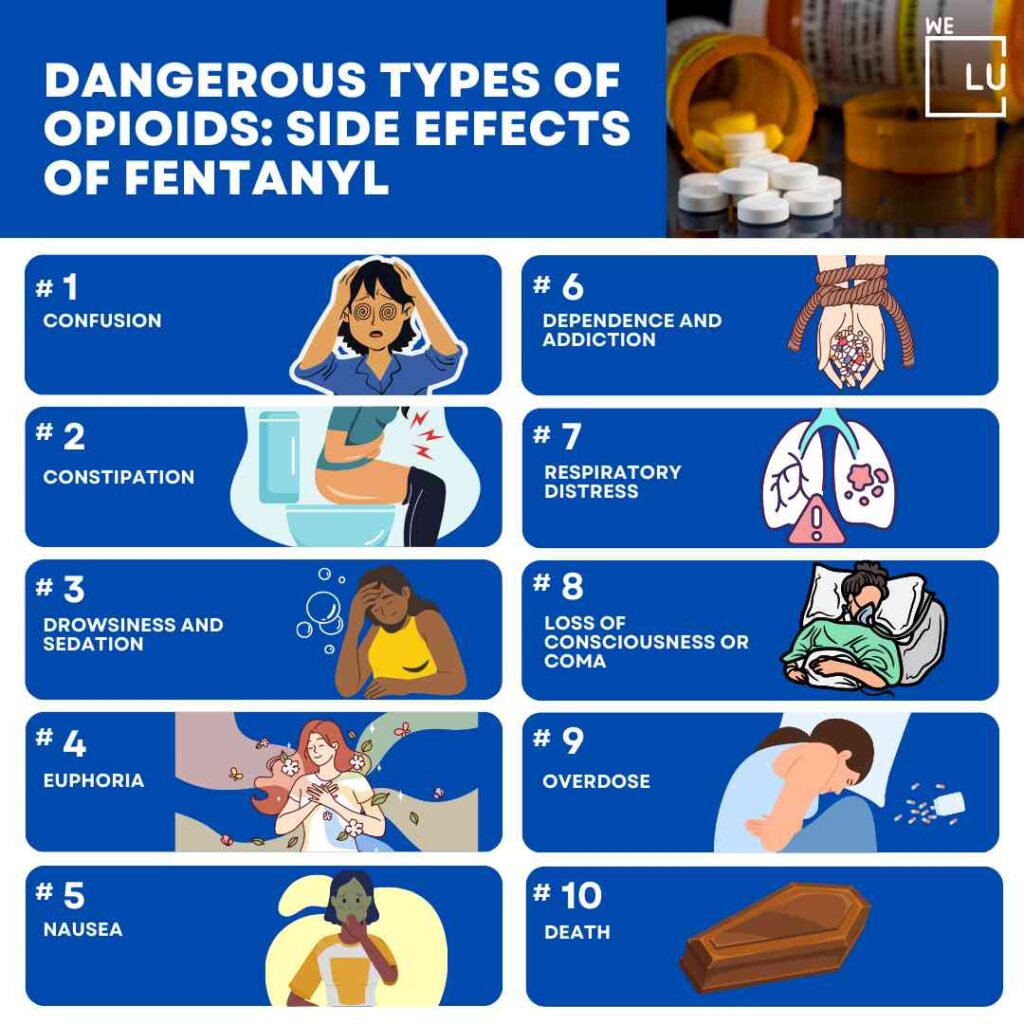
Embed the below “Dangerous Types of Opioids: Side Effects of Fentanyl” Infographic to your Website. This infographic is provided by the We Level Up Addiction Treatment Center team. To use the below infographics, you agree to link back and attribute its source and owner at https://weleveluptx.com/opioid-detox/
Dangerous Types of Opioids: Side Effects of Fentanyl Infographic image link: https://weleveluptx.com/wp-content/uploads/2024/03/Dangerous-Types-of-Opioids_-Side-Effects-of-Fentanyl-Opioid-Detox-What-Are-Opioids-Opioid-Detox-Facility-1024×1024.jpg
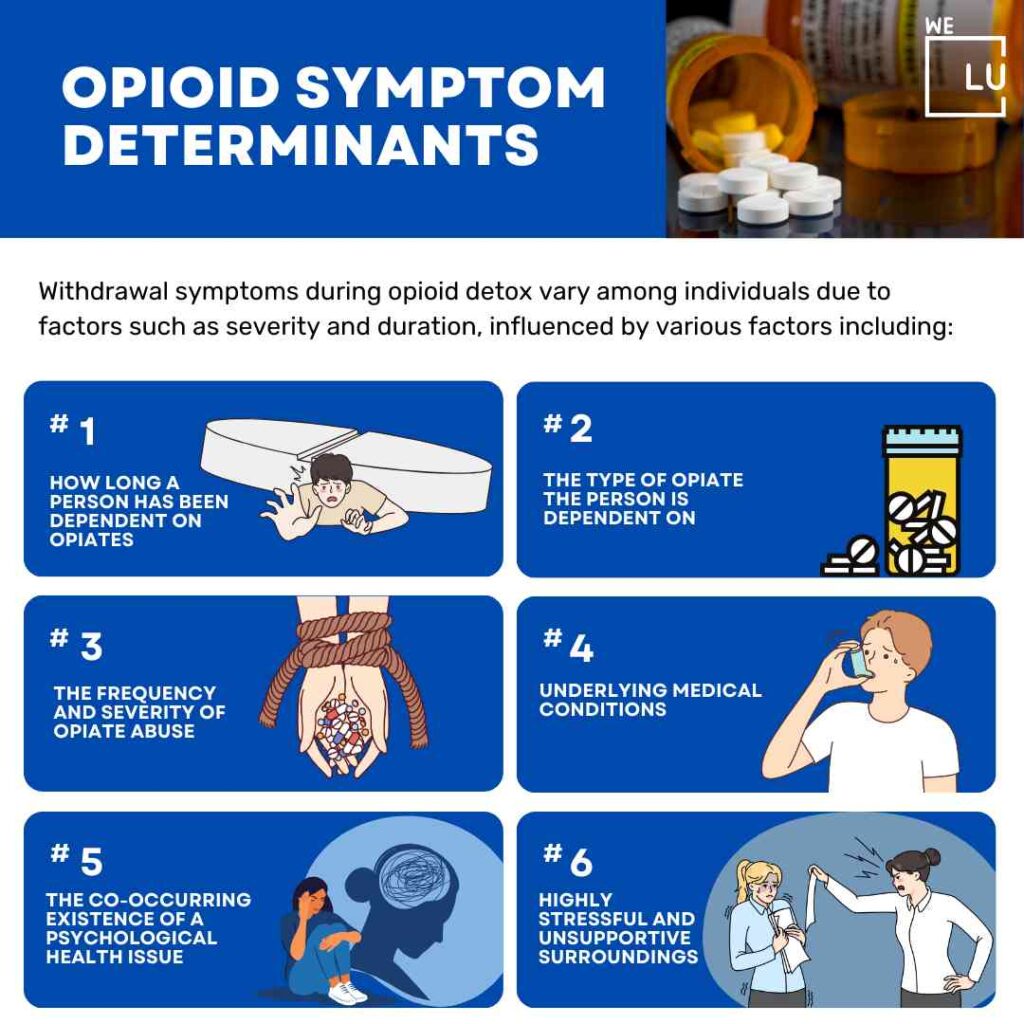
Embed the below “Opioid Symptom Determinants” Infographic to your Website. This infographic is provided by the We Level Up Addiction Treatment Center team. To use the below infographics, you agree to link back and attribute its source and owner at https://weleveluptx.com/opioid-detox/
Opioid Symptom Determinants Infographic image link: https://weleveluptx.com/wp-content/uploads/2024/03/Opioid-Symptom-Determinants-Opioid-Detox-What-Are-Opioids-Opioid-Detox-Facility-1024×1024.jpg
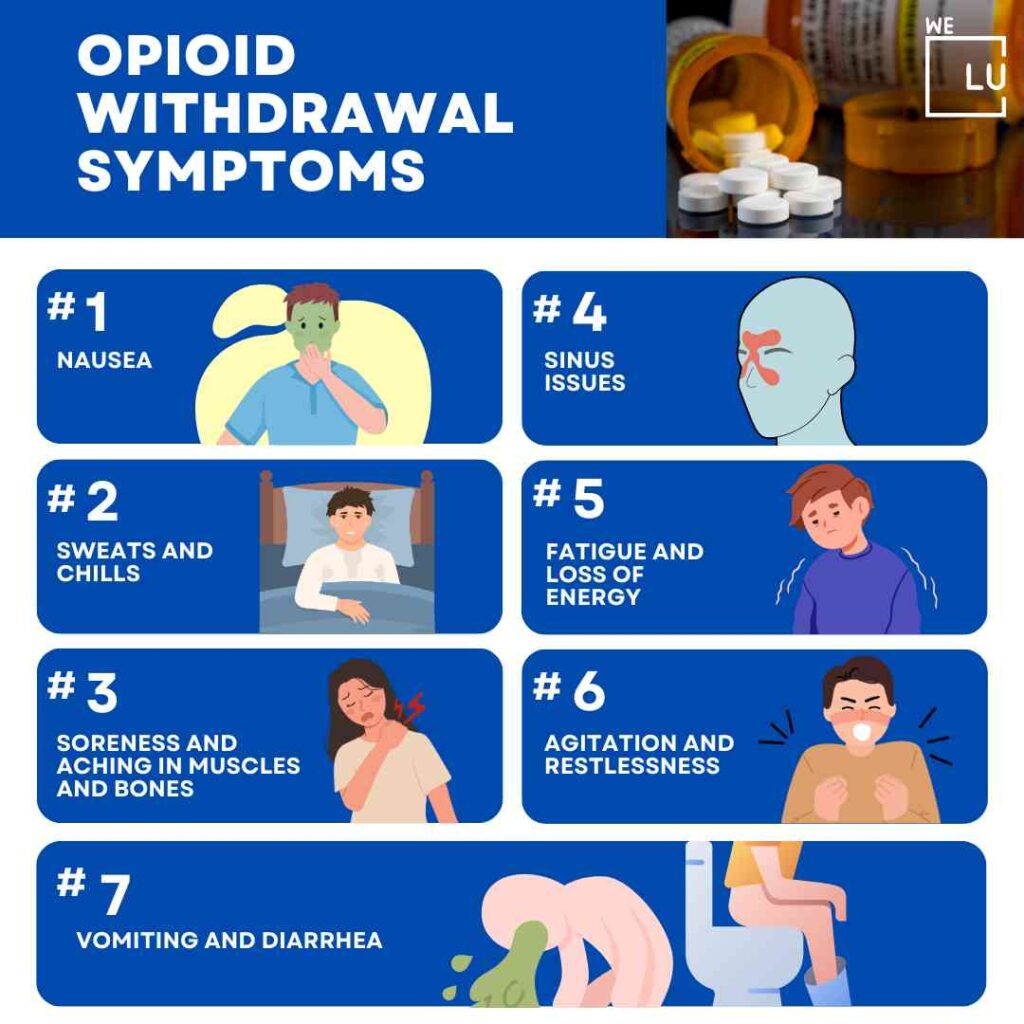
Embed the below “Opioid Withdrawal Symptoms” Infographic to your Website. This infographic is provided by the We Level Up Addiction Treatment Center team. To use the below infographics, you agree to link back and attribute its source and owner at https://weleveluptx.com/opioid-detox/
Opioid Withdrawal Symptoms Infographic image link: https://weleveluptx.com/wp-content/uploads/2024/03/Opioid-Withdrawal-Symptoms-Opioid-Detox-What-Are-Opioids-Opioid-Detox-Facility-1024×1024.jpg
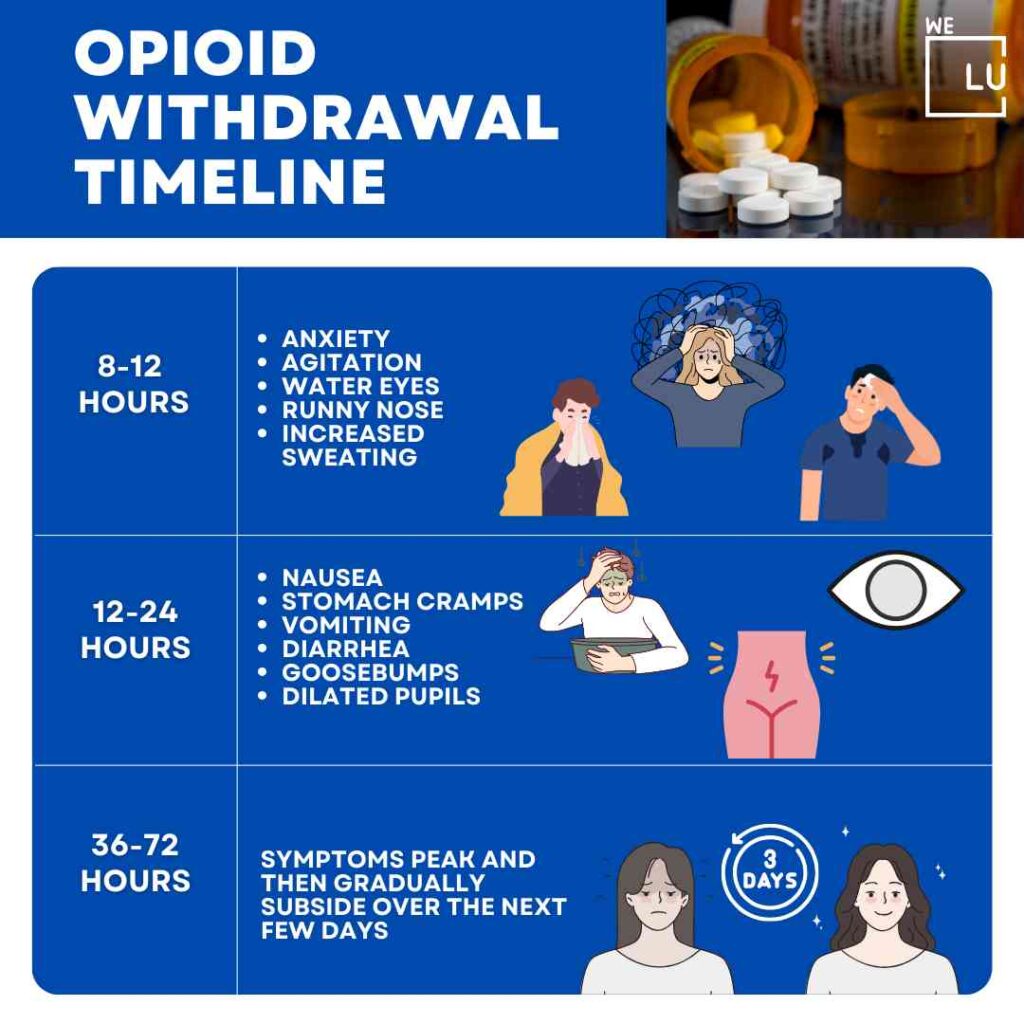
Embed the below “Opioid Withdrawal Timeline” Infographic to your Website. This infographic is provided by the We Level Up Addiction Treatment Center team. To use the below infographics, you agree to link back and attribute its source and owner at https://weleveluptx.com/opioid-detox/
Opioid Withdrawal Timeline Infographic image link: https://weleveluptx.com/wp-content/uploads/2024/03/Opioid-Withdrawal-Timeline-Opioid-Detox-What-Are-Opioids-Opioid-Detox-Facility-1024×1024.jpg
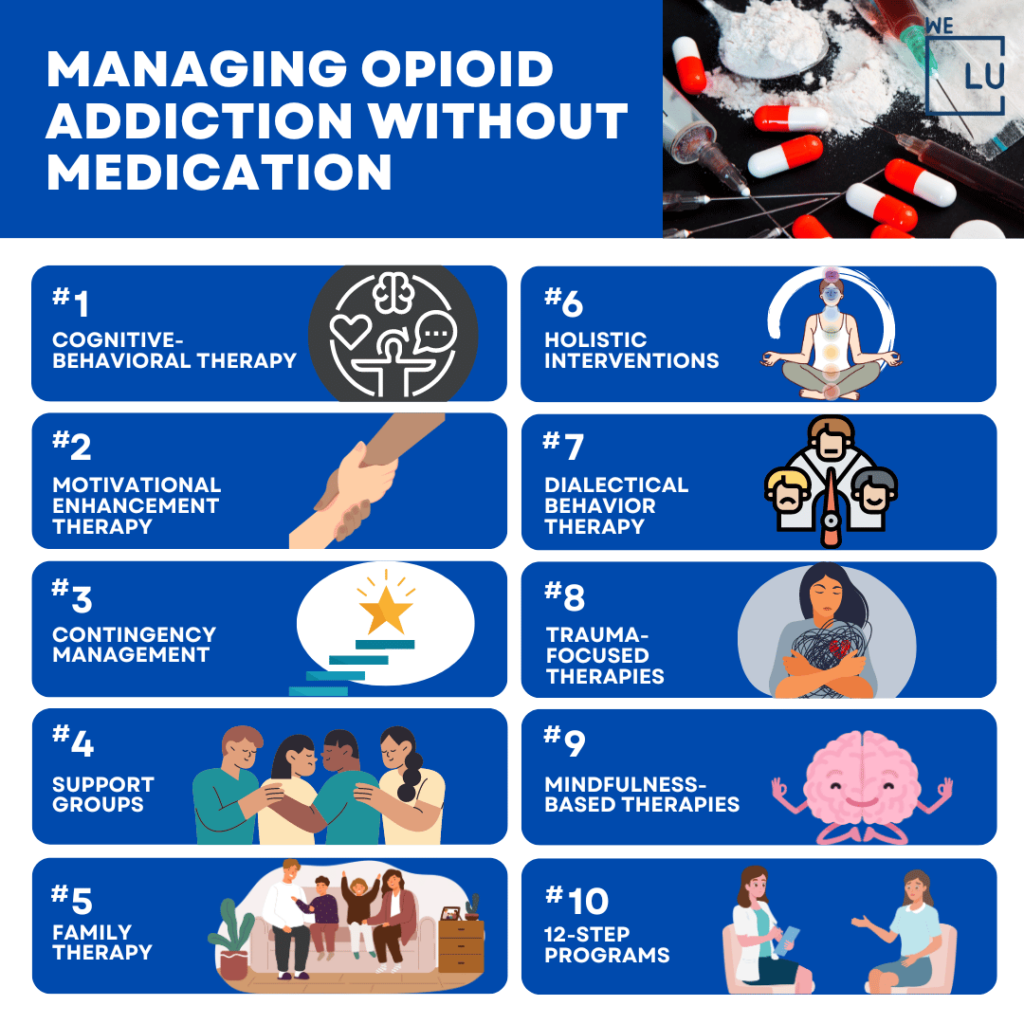
Embed the below “Managing Opioid Addiction Without Medication” Infographic to your Website. This infographic is provided by the We Level Up Addiction Treatment Center team. To use the below infographics, you agree to link back and attribute its source and owner at https://weleveluptx.com/opioid-detox/
Managing Opioid Addiction Without Medication Infographic image link: https://weleveluptx.com/wp-content/uploads/2024/03/Managing-Opioid-Addiction-Without-Medication-Opioid-Detox-What-Are-Opioids-Opioid-Detox-Facility-1024×1024.png
What to Expect from an Opioid Detox Center
Our opioid addiction treatment center is here to help individuals successfully complete the opioid detox process and to address psychological, physical, and spiritual issues connected to drug abuse. Qualified doctors, nurses, therapists, and addiction cases managers will be with you throughout the recovery process to ensure you have the support you need.
This is Hope
If you or a loved one is dealing with dependence or addiction to opioids, contact our treatment support at We Level Up TX to find the best treatment option and opioid detox for you.
